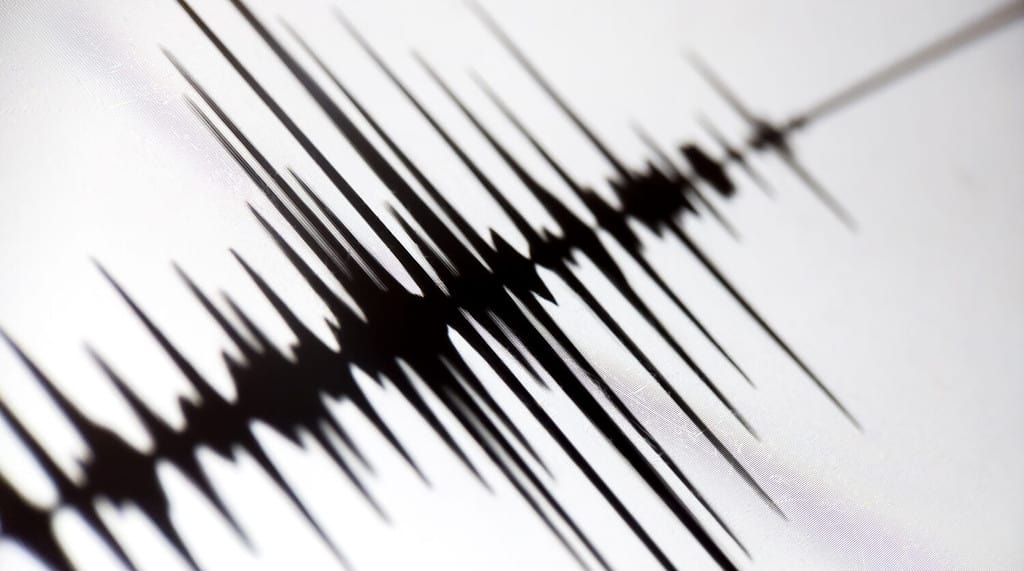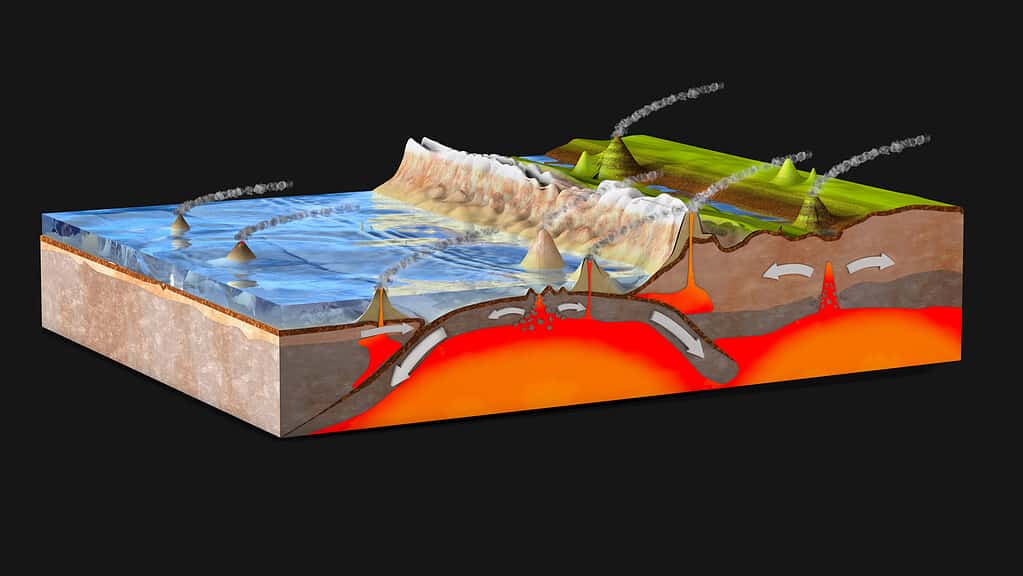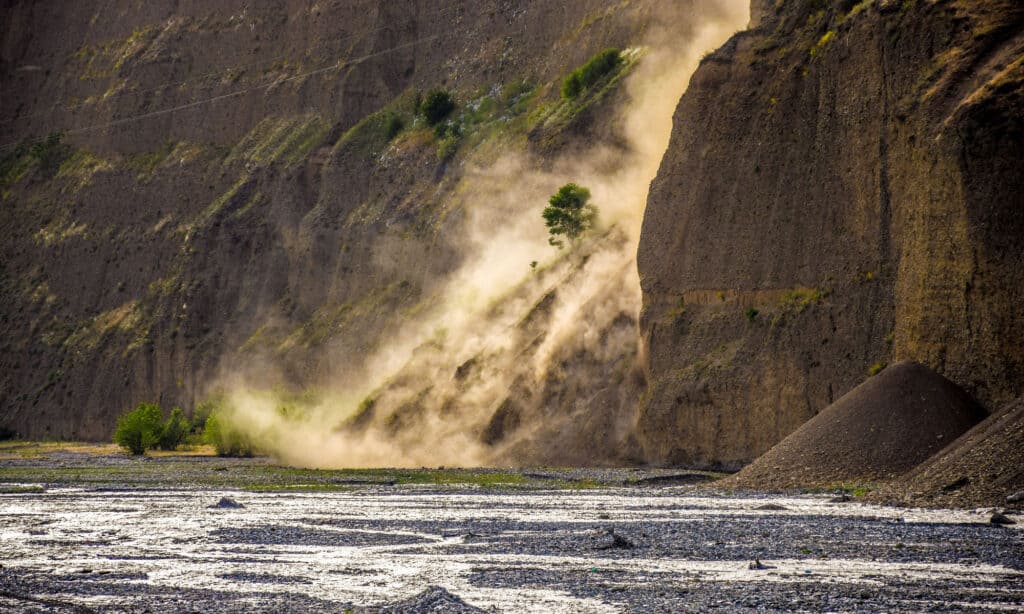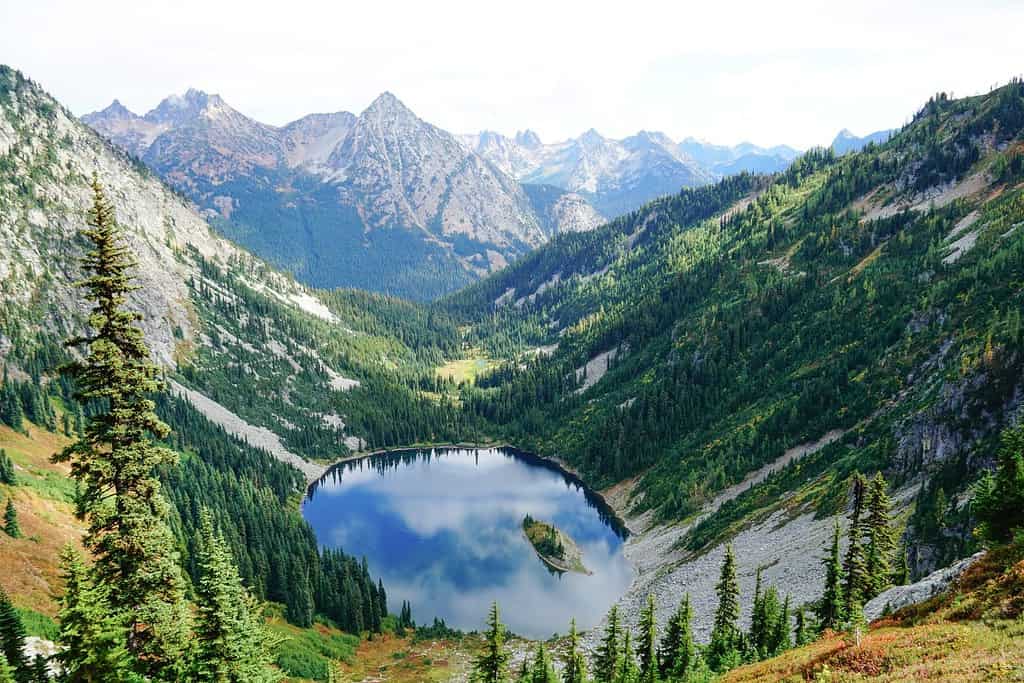Washington State suffers through its fair share of natural disasters. The sleeping giant that is the volcano at Mount St. Helens is a constant reminder of the ongoing threat nature poses to the region. However, volcanoes are not the only destructive force that affects the area. Washington has a high risk of earthquakes compared to other states in the country. Discover the most powerful earthquake to ever rumble through Washington State and find out when it struck, how much damage it caused, and more!
What Was the Most Powerful Earthquake to Ever Rumble Through Washington?

Scientists believe the 1700 Cascadia quake had a magnitude of 9!
©MuhsinRina/Shutterstock.com
| About the 1700 Cascadia Earthquake | |
|---|---|
| Moment Magnitude (Mw) | 8.7 to 9.2 Mw |
| Epicenter | 45°N 125°W, off the west coast of Oregon |
| Date | January 26, 1700 |
The most powerful earthquake to ever rumble through Washington State was the 1700 Cascadia earthquake, an event with a moment magnitude (Mw) of between 8.7 and 9.2. Some readers may find this information surprising. After all, Washington was not as highly populated then as it is now, and people lacked the tools to effectively measure earthquakes’ power.
That is not the only challenge with verifying this quake, though. No surviving written records from North America exist concerning the earthquake. In fact, scientists pieced together proof of the 1700 Cascadia Earthquake from geological records, archaeology expeditions, oral traditions of First Nations people living around the region, and records from Japan concerning a tsunami that struck the island nation many hours later.
The body of evidence supporting the existence of this powerful earthquake includes:
- Detailed records of an orphan tsunami striking Japan on January 27, 1700, roughly 10 hours after the quake, flooding 600 miles of coastal areas in Japan even though no earthquake was noted.
- The discovery of “ghost forests” where vegetation was suddenly inundated and killed by salt water.
- Evidence of inundated western red cedar trees with growth rings that ended in 1699 or 1700 compared to living samples in the immediate vicinity.
- Core samples with sediment layers that fall in line with earthquake and tsunami events.
This collection of evidence convinced the scientific community of the quake’s authenticity and power.
What Type of Earthquake Was the 1700 Cascadia Earthquake?

An illustration showing how subduction occurs.
©Christoph Burgstedt/iStock via Getty Images
Scientists believe that a megathrust earthquake was responsible for the devastation in the Washington area. Such an earthquake is caused by one tectonic plate being forced below another in a subduction zone.
These earthquakes are often large and intense. In this case, the Juan de Fuca Plate was subducting under the North American Plate. When the strain on the stuck portions of the tectonic plates finally releases, a massive earthquake occurs. While megathrust earthquakes are rare, they produce the largest and most destructive quakes.
Where Was Washington State’s Strongest Earthquake’s Epicenter?
Scientists believe that the earthquake’s epicenter was located somewhere around 45°N 125°W, an area west of Oregon. Although one can make the argument that the quake did not take place in Washington, the uncertainty surrounding the event’s location along with the overwhelming power of this quake merits it being considered the strongest in all the states impacted.
Damage and Casualties from the Most Powerful Earthquake to Strike Washington State

Massive landslides occurred in the region following the earthquake.
©tenkl/Shutterstock.com
The earthquake’s effects were widespread. However, no surviving written records exist of the quake’s impact in North America.
Some oral stories passed down by indigenous groups mention earthquakes that struck the area at night around that year. The stories talk about a powerful earthquake that made houses collapse, caused terrible landslides, and also created a tsunami that washed away entire villages. Although it’s easy to say that all these stories match the 1700 quake, they could be about another event. So, some of the damages and deaths ascribed to the 1700 event may have been from another earthquake in the region.
Given the power of the earthquake, it’s likely that homes were destroyed, and people died. People living in coastal areas would have faced intense shaking, landslides, and flooding from tsunamis. Still, we have no specific figures to offer about the casualties and damage in North America.
Several towns on the coast of Japan experienced a tsunami in 1700. Scientists believe it was caused by the most powerful earthquake to ever rumble through Washington State. Records say that several dozen homes were lost in Kuwagasaki from floods and fires. Other areas along the coast experienced varying levels of flooding or abnormal waves on the same night.
While we do not have a precise figure about the damages caused by the 1700 Cascadia earthquake. Yet, it’s somewhat likely that it killed many people and destroyed many buildings.
Other Powerful and More Recent Earthquakes in Washington State

The 1872 quake struck in the mountainous central part of Washington State.
©Christopher Duane Melton/Shutterstock.com
If we dismiss the 1700 Cascadia earthquake and all the uncertainty surrounding it, the next most powerful quake occurred in 1872. This time, a quake estimated at 6.5 to 7 Mw struck central Washington. Although we have better recordsabout this quake, it occurred before seismometers were used in the area. Scientists used data gathered at the time to estimate the intensity and magnitude of the earthquake with reasonable certainty.
The 1926 State Line earthquake was the strongest quake recorded by seismographs in Washington. This quake had a magnitude of 5.8 Mw and an intensity of VII on the Modified Mercalli intensity scale.
All told, Washington’s strongest earthquakes are somewhat shrouded in mystery. Even though the 1700 Cascadia earthquake occurred before seismology tools were available in the region, scientists have done an amazing job piecing together evidence to find out the quake’s strength and impact on the area.
The photo featured at the top of this post is © Cavan Images/iStock via Getty Images
Thank you for reading! Have some feedback for us? Contact the AZ Animals editorial team.







